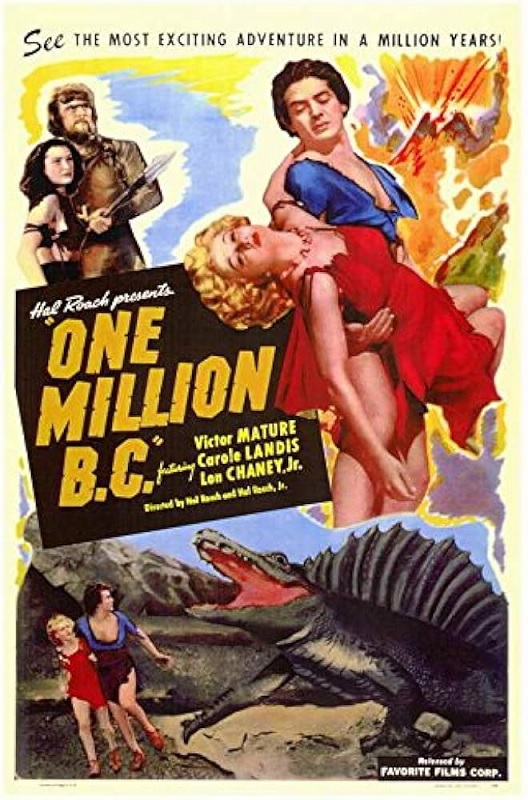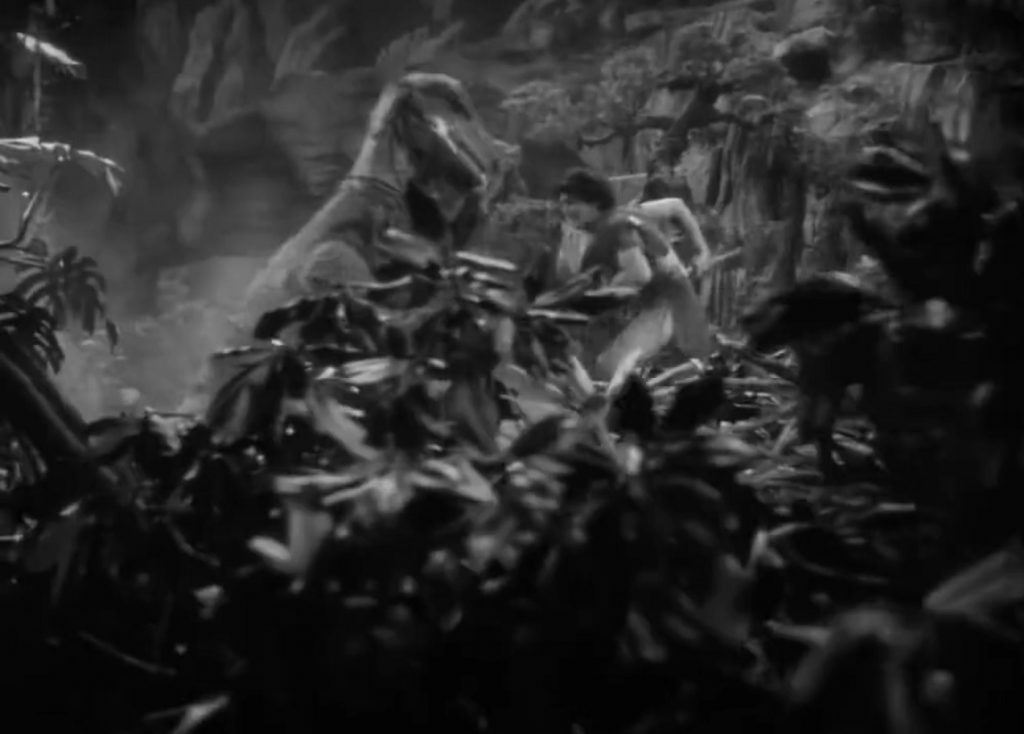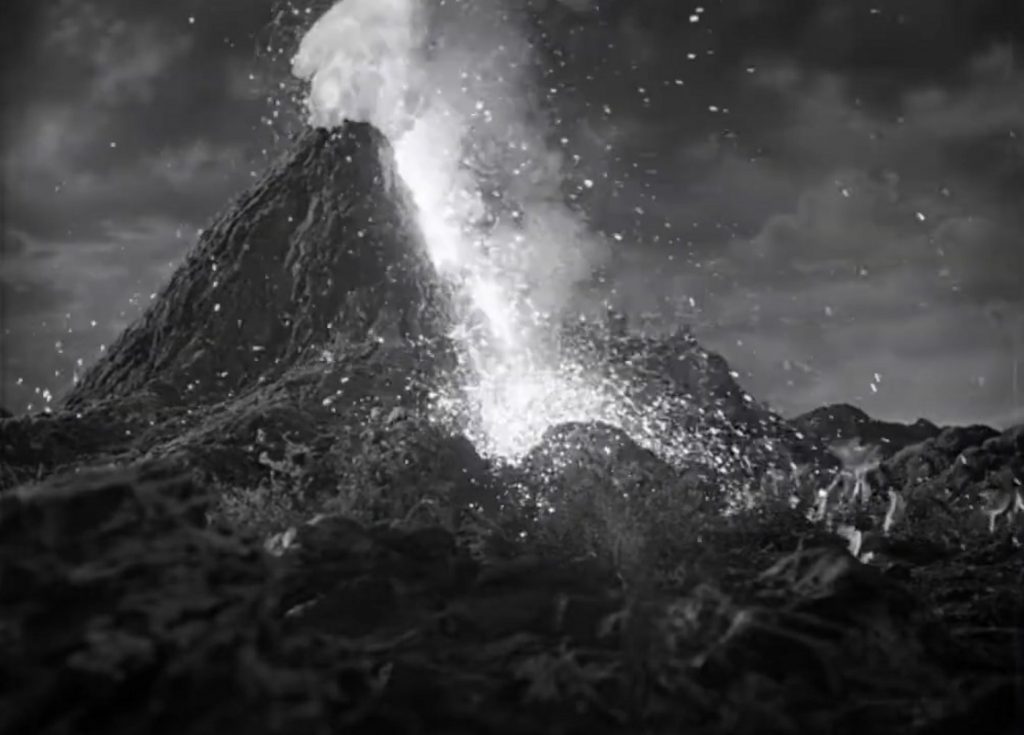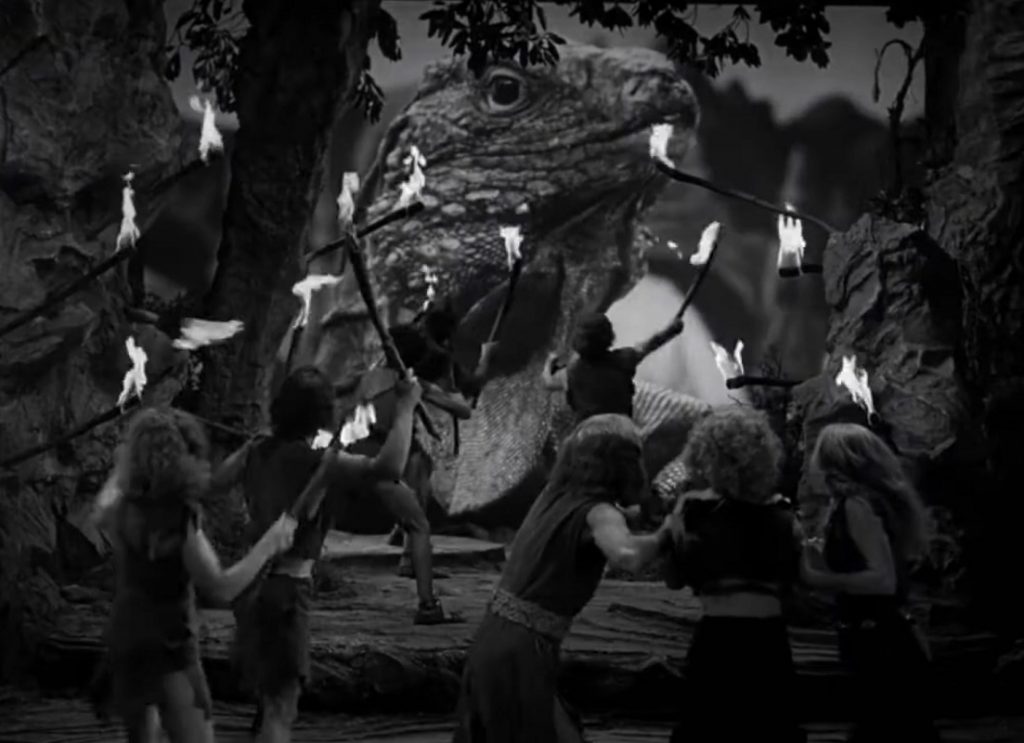




1940 – One Million B. C.
I was actually very pleasantly surprised by the incredibly good visual effects in this movie. I’ll admit, I wasn’t expecting much, but boy, was I wrong. They produced a wide variety of effects, from miniature models, to composite shots, to practical effects, elaborate sets, and animal cruelty. Wait… what?? Yes, we’ll get there in a bit. But nearly everything looked great on the screen. And just as a disclaimer: No, I cannot claim a cave-girl with coiffed hair, sculpted eyebrows, and a dress with spaghetti straps as visual effects
So obviously this is a film that takes place in a prehistoric era, so we have dinosaurs, lush tropic jungles, and an erupting volcano. And let me just comment on that fantastic effect. The spouting fire and smoke, the sparks and the river of molten rock were amazing! Not to mention the burning lava flow that claims the life of a woman trying to save her son, accomplished by some clever compositing. And the accompanying earthquake was great, as well, with falling rocks and people getting buried in a collapsing cave. It was a thrilling sequence.
But the real reason we’ve come to see the movie is the dinosaurs. How were they depicted? How good did they look? How realistic were they? Well, there were really three classes of dinosaurs, two of which worked, and one that didn’t in the most pathetic way. According to Wikipedia, “The “dinosaurs” and “prehistoric mammals” seen in the film include a pig in a rubber Triceratops suit, a man in an Allosaurus suit, Asian elephants with fake tusks and fur made to look like mastodonts, two dogs, Brahman cattle with fake horns and fur made to look like muskoxen, a sun bear cub, a six-banded armadillo with horns glued on, a young alligator with a Dimetrodon-like sail glued on its back, a rhinoceros iguana, a snake, a coati, a monitor lizard, and anole, and an Argentine black and white tegu.
At one point our prehistoric hero, Victor Mature, fights a guy in a really bad rubber suit. It was so bad that even without pausing the video, I could see the clear line where the rubber head was set on top of the rubber body. It walked like a human in a bad costume. And its head was a hard piece of plastic with no movement in the mouth or eyes. It looked comically bad. It’s why I give these effects a four star rating instead of five. Why, I ask, when everything else looked so good?
The second kind of dinosaur was the unaltered animal. They just filmed an iguana close up and composited it onto the screen with the actors. But it was the third kind of dinosaur that constituted animal cruelty. Actually gluing the prosthetics onto live animals, and then making them actually fight each other, crossed the line, and the Society for the Prevention of Cruelty to Animals banned such practices in filmmaking. It was a little difficult to enjoy that scene because it was clearly real.